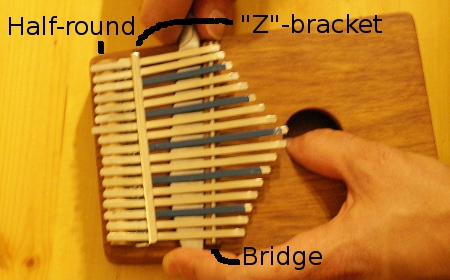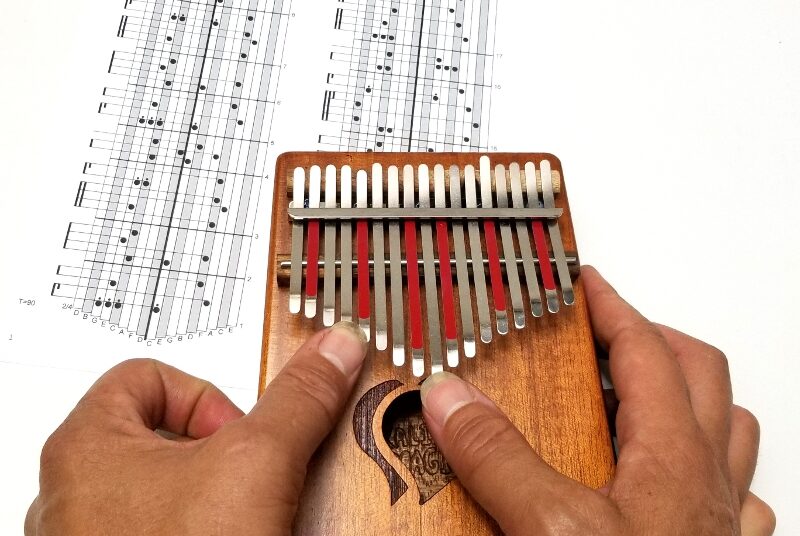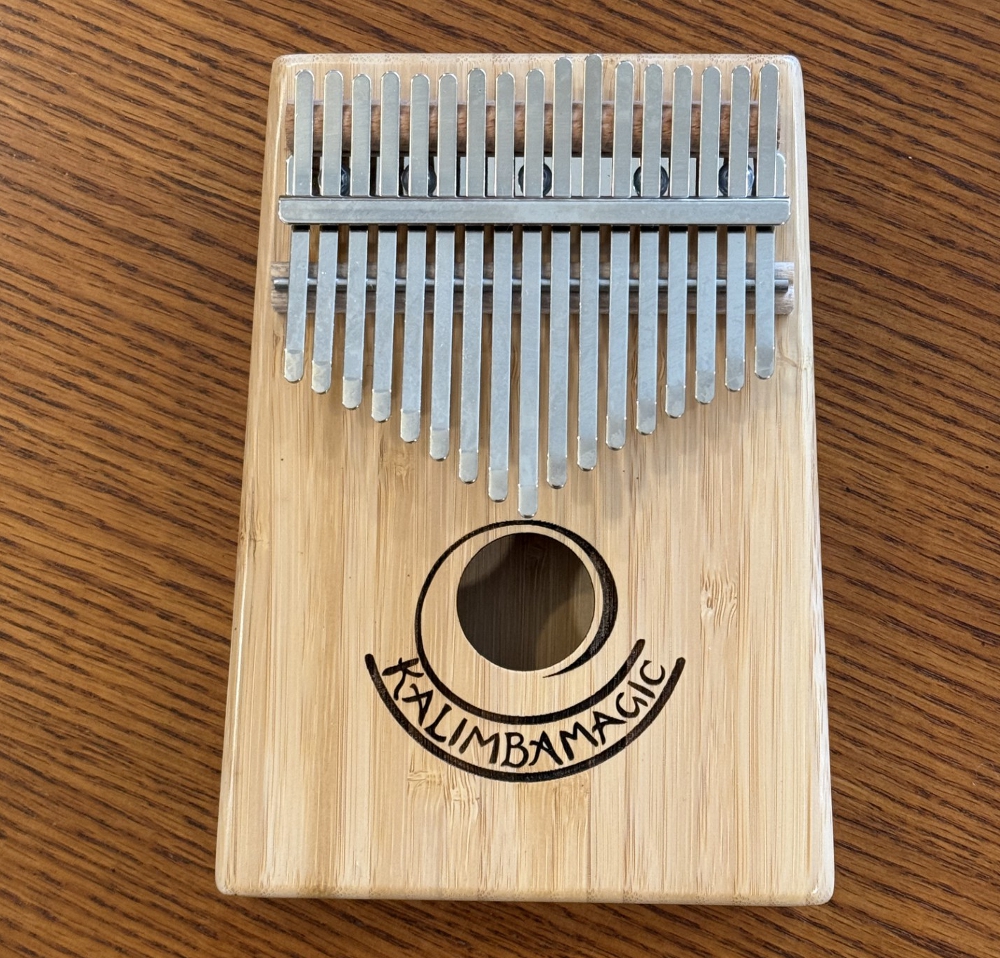
Use of this website constitutes acceptance of the Privacy Policy and User Agreement. Copyright © 2020 Kalimba Magic. All Rights Reserved.
It was the grapefruit juice drink that did me in. It somehow splattered on my old (50 years or so!) Bb Treble, perhaps my favorite kalimba, as I was on my way to a performance. While performing, I first noticed one note on the far left not ringing clearly. About 20 seconds later, the adjacent note went dim, and within a minute, to my distress, the whole left side suddenly stopped ringing. (My theory: as the juice dried between my kalimba tines and the bridge, it left a juice and dust-based cement that deadened the tines, leaving just a dull, quiet thud.) I had just witnessed the death of a kalimba!
Even though the kalimba died right in the middle of the performance, I was confident that when I got home, the Kalimba Doctor, who knows how to make dead kalimbas sing again, would take care of me. Luckily I AM the Kalimba Doctor.
When I opened up the kalimba to see what was going on, I was shocked to see how dirty it was, especially in the space between the Z bracket and the bridge. But also, the tines were just crummy, like someone had been frying potatoes on them for a month and then covered the whole lot with dust. Okay, it wasn’t that bad, but it was getting close. So this is what happens when you play a kalimba, a lot, for 10 years! (I had last done extensive maintenance on this Bb Treble kalimba when I first bought it on eBay 10 years ago.)
And now to the work of refurbishing my beautiful old kalimba so it would sing delightfully once more.
The trick: the bridge and half-round backstop are held in place by pressure created by the downward force of the z-shaped bracket/pressure bar, and this pressure is transmitted to the tines and in turn holds them in place.

This means that you can insert a butter knife under the tines, between the Z bracket and the bridge, and pull the bridge away, loosening the tines. When the bridge is removed completely, the tines fall out. You can clean the tines or clean the wood beneath the tines. You then have to reassemble the kalimba, which has many opportunities for wrong turns. Finally, after reassembly, your kalimba needs retuning.
Do not attempt this if you don’t already have great confidence with your tuning abilities. Also, do not attempt this if you don’t have good strength in your hands, as you will need it to lift the tines back onto the bridge in reassembly. If you meet these requirements, this operation will probably take you about an hour. If you have doubts, don’t do it!!!
Let us discuss your options here. There are two ways to avoid having to take your kalimba apart, clean it, put it back together, and then retune it. First, you could keep your kalimba in its box when not playing it, and avoid giving it showers in grapefruit juice or anything else! A well-protected kalimba should stay in good condition for decades. (A small confession here: I actually prefer leaving my kalimbas out where I can see them; they regularly call to me to come and play them.)
Your second option: give it over to the Kalimba Doctor. People all over the country have sent us their tired, poor old kalimbas, and we have worked our magic on them, cleaned them, repaired them, fixed them up, gluing when required. And those old kalimbas are then carefully tuned, made to play well again, and sent home.
The full kalimba tune-up – $25 plus return shipping. If your kalimba needs to be taken apart and reassembled, as I had to do with my sweet Bb Treble kalimba after the grapefruit juice incident, it will need a full tune-up. A tune-up includes cleaning of the tines and wood, repairs on the wood as required, reinforcement of the box to eliminate dead tines as required, and the reassembly and tuning of the instrument. We’ll scrape old paint off the tines and/or repaint wherever needed.
The kalimba tuning – $10 plus return shipping. If your kalimba is in good condition, but is just out of tune, you should first try to tune it yourself (see the tuning link at the bottom of this post). While I discourage people from taking their kalimba apart, I do encourage people to tune their own kalimba. Tuning does not require taking the instrument apart. Still, a small percentage of kalimba players will not have enough strength in their hands to accomplish tuning, but tuning a kalimba is accessible to most kalimba owners. If tuning is beyond your abilities or your confidence level, we’ll be glad to lend a hand. Look for the Kalimba Doctor services link below.
I know there are a great many old Hugh Tracey kalimbas out in the world, and many are currently in no shape to make beautiful music because of inattention. If you have one of these and would like it to sing once again, I can help you.
The video playing below shows my Bb Treble kalimba some six years ago, singing “O Danny Boy.” I am so glad that this favorite kalimba’s voice is (again) singing sweetly, thanks to a simple visit to the Kalimba Doctor!


Sign up for our newsletter and free resources with your email address:
We pinky promise not to spam you and to only send good stuff.
 Seek to Infuse Your Musical Moments With Beauty and Magic
Seek to Infuse Your Musical Moments With Beauty and Magic Kalimba Magic – We Give You The Tools You Need to Succeed
Kalimba Magic – We Give You The Tools You Need to Succeed Back in Stock! The Bamboo-17 Kalimba
Back in Stock! The Bamboo-17 KalimbaUse of this website constitutes acceptance of the Privacy Policy and User Agreement. Copyright © 2020 Kalimba Magic. All Rights Reserved.